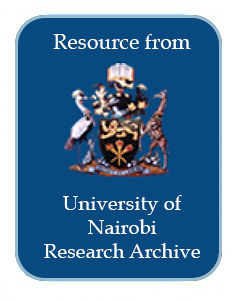Resource information
There has been tremendous changes in soil use and management in the River Njoro Watershed during the last three decades. Formerly large-scale farms converted into smallholder farms and plantation forests have gradually been lost. These changes in soil use have brought in different soil use and management approaches that have triggered soil erosion and other forms of land degradation. Up to 8.6 Kg of soil, loss per hectare from the cultivated soils has reportedly been lost in one storm. This massive soil loss was probably due to reduced aggregate stability and hydraulic conductivity. The objective of this study was to trace the changes in soil use and determine their effects on aggregate stability, organic matter and hydraulic conductivity. The study undertook a semi detailed soil survey of the watershed through a three-tier approach comprising image interpretation, field surveys and laboratory analysis. The measured variables in the soil were analysed using a two - way ANOVA and correlation analysis. The study found the major land uses to be forest, agriculture, grassland, and Wetland, and also observed a strong soil — landscape relationship within the Watershed. Soils of slopes were moderately to severely eroded, shallow and les developed whereas those on summits, pen plains, uplands, plateaus and valleys were deep and well developed. Aggregate stability Was in the order of forests > grasslands > agriculture Wetland. The mean Weight diameter in various land uses Was 0.68, 0.64, 0.58, and 0.41 respectively. Hydraulic conductivity Was in the order of forests > agriculture > grasslands > wetland. Hydraulic conductivity significantly correlated negatively With bulk density and Lay content. We concluded that land use changes that reduced the amount of organic matter significantly reduced aggregate stability. In addition, soil use and management activities that reduced organic matter content significantly lowered hydraulic conductivity and therefore likely to contribute to erosion and other forms of land degradation.


